France’s Normandy region offers a brilliant buffet to culinary tourists road tripping from Dieppe to Cherbourg. Normandy’s fertile soil supports countless crops but it’s the noble apple and pear which are most famous here. The region supports countless varieties, used wildly in cooking, and for cider, Calvados and sparkling poiré. The rich milk offered by Norman cattle produce velvety cream, butter and fine fromage (hands up for camembert)! Chicken, beef and pork graze with glee offering a carnivores delight while fisherman on the coast haul treasures from the English Channel offering seafood fans fresh Dover sole and shucked oysters!
10 Tastes of Normandy France
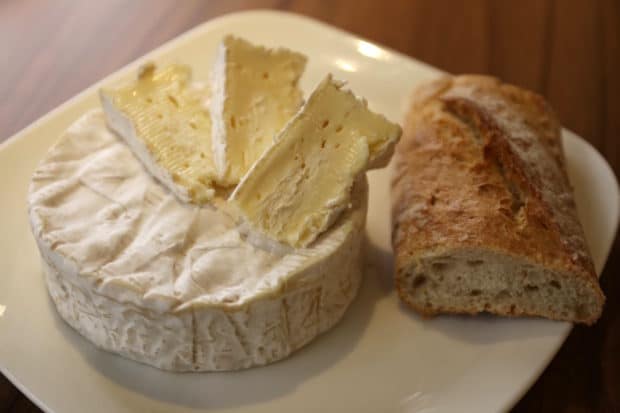
Camembert
This world-famous cows milk surface-ripened cheese was invented by Marie Harel in 1791 during the Revolution. Legend has it the recipe was passed down to her by a refugee priest she helped. A statue in honour of “The Mother of Camembert,” stands in the village of Camembert (there is also a Camembert Museum in the shape of a Camembert box). An authentic camembert should have a generous flavour and its texture should be soft but not runny. Best enjoyed with a crunchy baguette and bottle (or two) of wine.

Cider
The Cider Route, to the east of Caen, is a 40km marked tourist trail throughout the picturesque area of Pays d’Auge. A genuine postcard of Normandy, the Cider Route takes you to the heart of the Pays d’Auge to discover cider, calvados and pommeau producers in a setting adorned with apple orchards and half-timbered houses. Sailors from the Basque Country are said to have introduced cider, or sagardoa (Basque for apple wine), to Norman mariners as early as the sixth century, and by the 12th century, the Spaniards had exported cider making to Normandy. By the 1600s, cider had supplanted cervoise (an ancient barley beer) as the region’s tipple, which it remained until the middle of the last century when beer took over. Whenever you’re looking for a thirst quench opt to order a locally produced apple cider or if you’re lucky and find a bottle of Le Pere Jules you’ll relish in the region’s harder to find Perry.
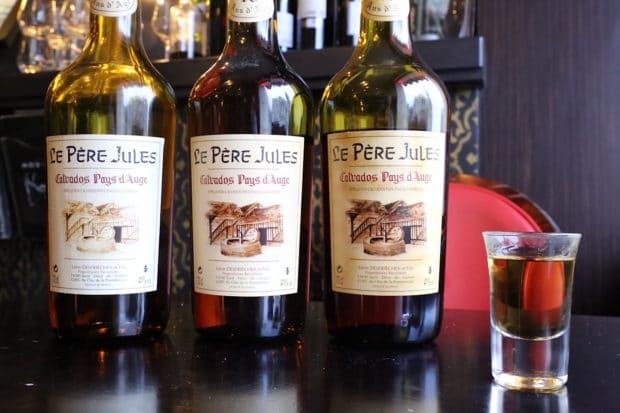
Calvados
Calvados is an apple brandy produced within the Calvados appellation contrôlée in Normandy. It is distilled from cider made from specially grown and selected apples, from over 200 named varieties. It is not uncommon for a calvados producer to use over 100 specific varieties of apples, which are either sweet (such as the Rouge Duret) or tart (such as Rambault). The fruit is harvested and pressed into a juice that is fermented into a dry cider and then distilled into eau da vie. After two years of aging in oak casks, it can be sold as Calvados. The longer it is aged, the smoother the drink becomes so splurge on a sip from a 10 or 15 year aged bottle.

Poulet Vallee d’Auge
The key Norman ingredients, cider and cream, are combined to make this delicious chicken dish from the Pays d’Auge. Chicken pieces and mushrooms are sautéed in butter, then braised in a sauce of cider, Calvados and cream. An unforgettable decadence!
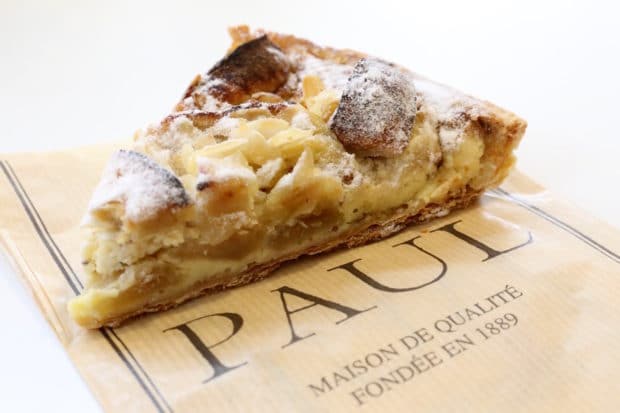
Flan Normand
If you’ve got a sweet tooth head into any of Normandy’s petite patisseries and you’re liking to find a few treats named after the region. At the iconic Paul bakery I nibbled through a decadent Flan Normand featuring the region’s two favourite fruits (pear and apple) muddled with rich almond paste.

Filets de Sole Normande
Occupying pride of pace amongst the catch brought by Normandy’s fishermen is the magnificent Dover sole, in French sole Normande. It is equally delicious cooked simply, with butter, or as in Dieppe, with shrimps and mussels in a creamy veloute sauce.
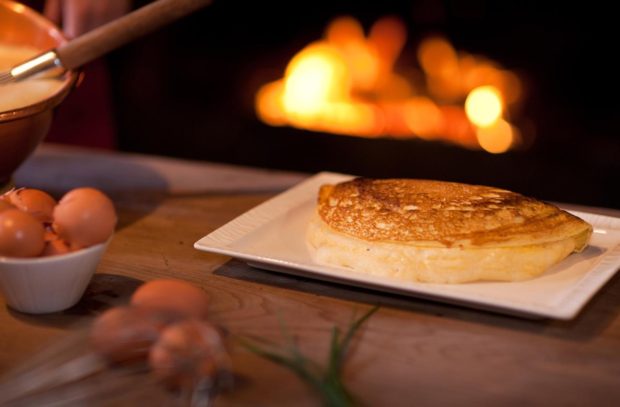
Omelette de la Mere Poulard
Annette Poulard (1861-1931) was patronne of a hotel in Mont-St-Michel which today still serves up her secret omelette recipe at La Mere Poulard. The exact recipe for her famously perfect omelettes, available at any time of the day for hungry visitors who had crossed the bay on foot or by horse and cart, is not known. We do know, however, that she never let the butter brown, beat the eggs vigorously in a copper bowl, possibly separating the yolks and whites first, and stirred continuously as she cooked the in her long-handled pan.
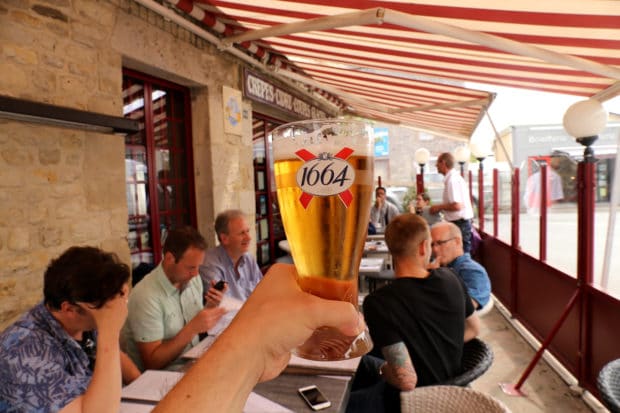
Ice Cold Kronenbourg
When keen on slurping an ice cold beverage most locals indulge in the regions celebrated cider but if you fancy on a more bitter beer option you’ll always find a pint of France’s iconic Kronenbourg on tap. The brewery was originally founded in 1664 by Geronimus Hatt in Strasbourg, Holy Roman Empire though its name comes from the area in Alsace where the brewery relocated in 1850.
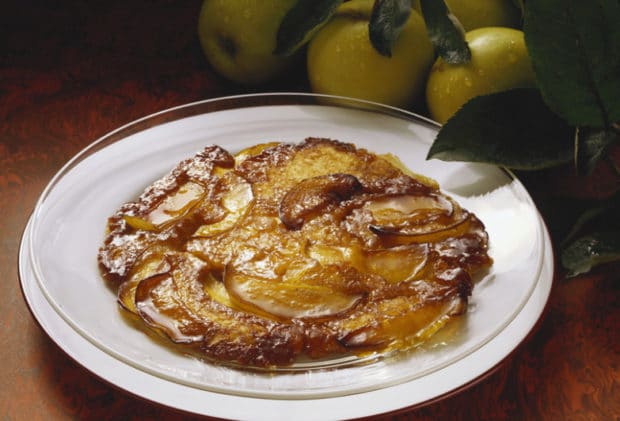
Crêpes Normande
There’s no finer way to wake up to the world then by slicing through a delicate crepe. Normandy’s paper-thin pancakes are traditionally served with slices of sweet apple and pear and drizzled with honey.
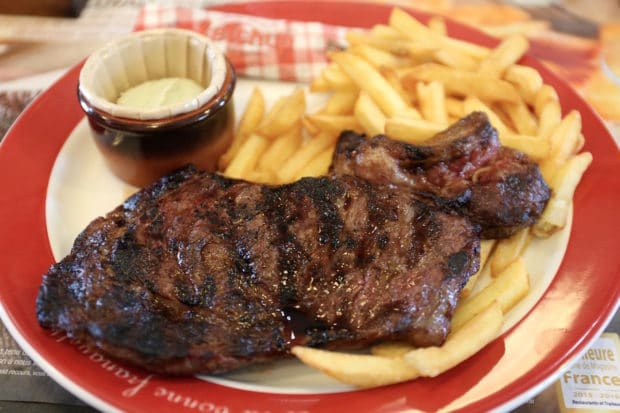
Steak Frites
One can’t say they’ve visited France until they’ve kicked back at a brasserie and sliced through the country’s national dish, steak frites. Historically, the rump steak was used for this dish but today the steak is more commonly an entrecôte (rib eye), pan-fried rare (“saignant” – literally “bloody”), in a pan reduction sauce, although hollandaise, béarnaise or roquefort sauce are not uncommon.


